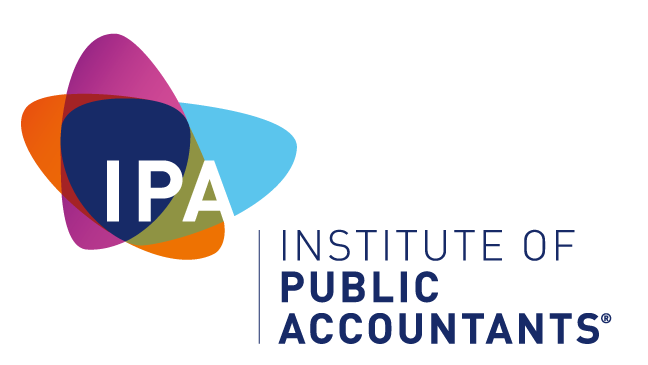Economic challenges are expected to continue into the 2024 financial year, from inflation and supply chain lags to higher interest rates and reduced consumer spending.
Businesses will need to keep a close eye on their income and expenses to maintain positive cashflow, Small Business Loans Australia founder, Alon Rajic says.
“As Australian businesses continue to face the repercussions of the last two years, a significant proportion will have challenges, particularly without a savings buffer or strategy to help meet their expenses,” said Rajic.
Small Business Loans Australia research set out to find out if fast-rising interest rates and inflation would impact small business’ ability and motivation to invest in themselves. Specifically, more than a quarter (29 percent) of respondents had not planned to invest in their business at all this financial year.
Three quarters of respondents (76 percent) admit their cashflow will be impacted by interest rate rises and inflation over the next year, it also found.
Specifically, 30 percent believe their cashflow will be impacted because it will be harder to collect customer payments, while 26 percent say it will be harder to attract sales. A further 20 percent say both issues will impact cashflow.
But before you take any extreme actions like reducing staff hours or letting workers go, here are 11 straightforward tips to begin minimising business costs today.
1. Take a systematic approach
The best starting place is to consider your key cost centres, such as purchasing, sales, finance, and administration, for example.
Go over your profit and loss statement for the past 12 months and rank your expenses from highest to lowest and comb through each one in search of cost saving potential.
Make sure you go back and look over your budgets and forecasts and see how you’re tracking.
Also, benchmark your business against industry standards. For example, your waste levels could be higher than the industry average, or others in your industry could be introducing sustainable business measures, which could be bringing them savings.
2. Uncover hidden costs
Costs aren’t always easy to spot in business, but they can add up quickly.
Hidden costs could be the rising cost of insurance policies, unused subscriptions, permits and industry memberships you pay each month even though you never enjoy any of the perks they offer.
Sit down and go through your bank account and track the expenses to see where you can make savings or do without.
Also, be sure to double check supplier invoices for any overcharging, double billing or discounts that haven’t been applied.
3. Sell off unwanted equipment
If you’re no longer using tools and equipment, don’t let them sit in the garage or stockroom gathering dust. Conduct an audit and convert what you can back into cash wherever appropriate.
Selling used or unwanted items brings in some extra cash, you’ll be able to put that money back into keeping the business running.
4. Negotiate with suppliers
Taking half a day out to shop around for lower prices could end up making you more money than you realise.
Call your bank and see if they will offer you a better deal on your business loans, and shop around energy providers to see how you might reduce your utilities overheads.
Start with your biggest expenses and work your way down the list.
5. Separate personal and business expenses
Put simply: don’t make personal purchases from the business credit card.
Separating out your expenses will mean you can account for them easily and it’s a great way to make sure you don’t miss out on tax deductions.
It can also make sure you aren’t mistakenly claiming for personal expenses, which will be frowned upon by the Australian Taxation Office.
6. Reduce spending. After all, a penny saved is a penny earned.
And that means it’s much easier to hold onto the cash you already have.
Set a budget, and follow it, and analyse where your money is being spent and where you can cut costs.
Even simple things like packing your lunch and purchasing a coffee
machine for the office can add up over time — that five dollars a day for takeaway coffee will wind up being around $1,300 over the course of a whole year.
7. Conduct a tech audit
Technology costs can add up, but if you’ve implemented tech a year ago that you’re no longer using, it can be a huge waste.
Go through your licenses and subscriptions that you don’t need or use to see what you can be culled.
It may be that you’re also hemorrhaging money due to inefficiencies in your systems — for example, if you’re wasting time and resources on manual data transfers between multiple software solutions.
A business management platform should include a broad variety of built-in features, allowing you and your staff to accomplish all your core business processes, such as accounting, payroll, inventory management and more.
8. Improve staff productivity
Employees not pulling their weight in the business can reduce efficiency and become a costly liability.
Assessing and improving staff performance can be a great way to reduce costs before resorting to reducing staff hours.
Set ambitious but achievable goals your staff can get behind and consider what business management tools you might need to help track productivity and performance.
9. Realign marketing budgets with performance
The sole purpose of marketing is to drive interest in your business’ products and services.
When times are tough, taking a close look at your marketing performance should be a regular occurrence to determine whether you’re getting value for money.
For instance, doubling down on your customer service may drive word of mouth outcomes that effectively boost the effectiveness of other marketing activities, or a targeted letter could deliver a new favourite customer.
Whether your analysis results in less spend or more, auditing your marketing budgets will help you gain a better understanding of where and when sales are coming in, and where your money is spent.
10. Reduce your space
Do you really need that shopfront or office space anymore?
We all learnt the virtues of running a virtual business over the past few years, so if you’re still leasing an office space, now could be the time to consider whether there are more cost-effective alternatives.
11. Seek out an expert
If you’re finding it challenging to cut costs, consider hiring an expert to suggest other cost reduction strategies.
The right advisor can help you audit your existing systems and processes, business and sales strategies, and make suggestions on how to sustain and grow your operations.
Don’t leave the hard decisions until too late. If you’re facing challenges as a result of the current high-cost environment, now’s the time to get active.









